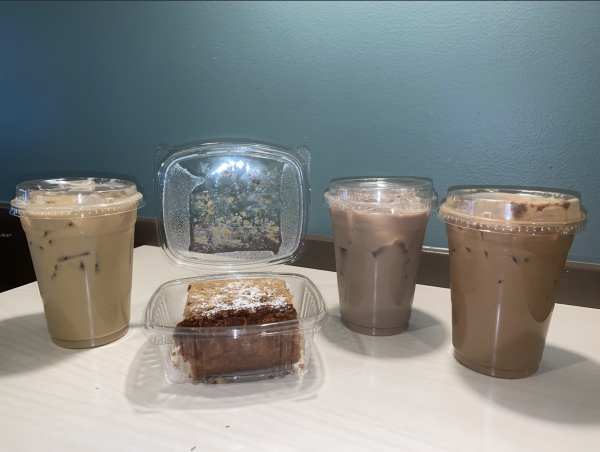Top 5 Myths About Advent
Brebeuf’s Advent wreath, located in the Main Lobby.
December 14, 2021
With the third Sunday of Advent (Gaudete Sunday) coming up, many are already engaging in a time of Advent— a time of preparation for Christmas. Snow is in the air— and apparently so are myths about this ancient liturgical season. Here are the top five myths about Advent!
- It starts on December 1st.
Despite numerous Advent calendars portraying the contrary, Advent does not begin on December 1st! Instead, it depends on the year; Advent is meant to have four Sundays before Christmas, but since Christmas is on a different day of the week every year, Advent’s start date shifts. This year, it began on November 28th.
- Its purpose is only to prepare for Christmas.
To only be thinking about Christmas is to be forgetting something very important— the end times! Yes, for the Catholic Church, Advent is meant to prepare those on earth for the coming of Christ— not just commemorating the birth that split time years ago but also promises that He will come again when time as we know it passes away.
Fr. Chris Johnson notes that looking forward to the end times “seems like a negative thing, but… the idea [is] of being face-to-face, present with the reason for all that is, the creator of all that is— God.” Quoting a 1962 Roman Missal, he emphasizes that the purpose of Advent is to “remind the faithful of the absence of Christ… We know that Jesus is coming, but it’s like we put it back in the wrapping paper to re-experience that anticipation— because that’s the same anticipation we need for thinking about the end times as well.”
- The rose-colored candle is the last candle to light on the Advent wreath.
The unique coloring might lead some to think that this candle connotes a climactic final week of Advent, but it comes instead around halfway through the season; it is the candle for Gaudete Sunday, which is the time when the Church puts a special emphasis on the joy of the season. In the latter half of Advent, things begin looking up, so to speak, we prepare further for the coming of Christ.
- The priest wears pink on Gaudete Sunday.
Get it right. Officially, priests in the Catholic Church wear rose-colored vestments, not “pink.” Think you can tell the difference? Click here to test your skills!
- Advent happens towards the end of the year.
Okay, no but actually yes. Technically Advent does happen towards the end of the calendar year; it is December, after all! BUT Advent is also the first season of the Catholic liturgical year (followed by the seasons of Christmas and Ordinary Time before getting into Lent and Easter!), so in one sense, Advent is actually the beginning of the year.
BONUS MYTH: Christmas is over on December 26th!
Remember what I said about liturgical seasons? In the Catholic Church, certain holy days are just too important to only celebrate for a day. Catholic Answers confirms that not only does the Church spend four weeks preparing for Christmas, but the Christmas season itself lasts until the feast of the Baptism of Our Lord— which this year is January 9th!
Have a blessed Advent!





